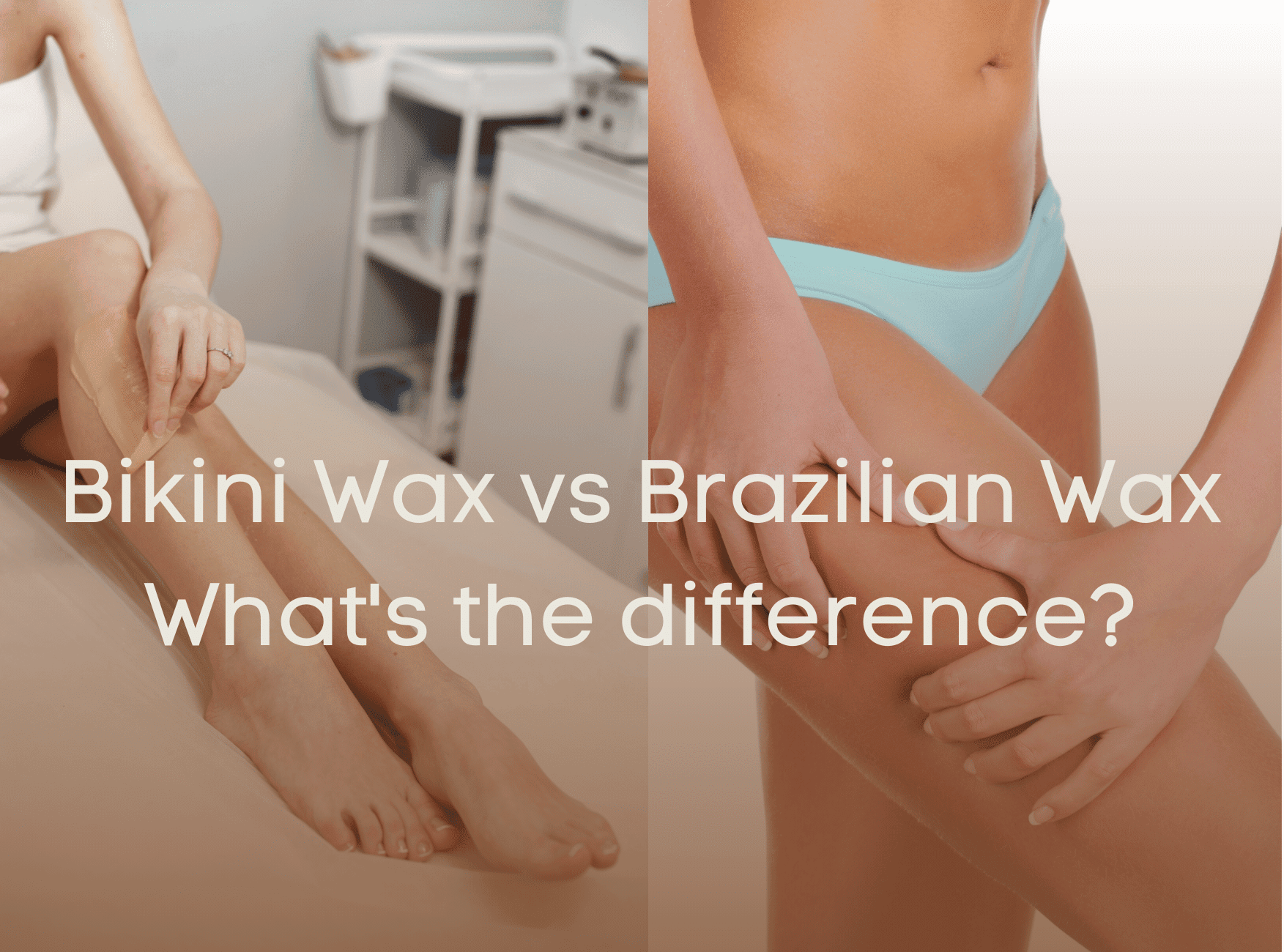A bikini wax generally removes hair along and just outside your bikini line. A Brazilian wax, by contrast, typically eliminates nearly all the hair in the pubic region or very close to it.
If you’ve wondered how a Brazilian differs from a bikini wax, you’re in good company. Here’s a full rundown of Brazilian versus bikini waxing (and tips to help you decide which is best for you).

What sets a Brazilian apart from a bikini wax?
The primary distinction is how much hair is taken away.
With a Brazilian, the technician removes everything or almost everything (there are a few variations — more on those below!).
With a bikini wax, the professional usually removes only the hair along the bikini line (basically anything that could show outside your underwear or swimsuit).
Brazilian waxing basics
Hollywood wax
This style removes all hair from the pubic area, including the pubic bone, labia, upper thighs, and the area around the anus.
Its name is linked to its (alleged) popularity among Hollywood personalities and is sometimes called the “honeymoon wax.” This technique takes away all pubic hair — and we mean completely all!
French wax
This method clears hair from the labia and pubic bone while leaving a small rectangular patch (often called a “landing strip”) on the front of the pubic area. It’s akin to a Brazilian, though hair on the buttocks is not removed.
Bikini waxing basics
Bikini line
Typically, your esthetician will remove hair along the bikini line that might be visible outside your underwear or swimwear.
Bikini full
The term can be misleading since it suggests everything is removed — which isn’t the case.
With a bikini full, hair from the pubic bone and labia is removed, but the strip down the butt or the area around the anus is not included. At many salons, this is offered as an add-on to the standard bikini wax.
Wax types used for Brazilian and bikini services
The two most common wax varieties are hard wax and soft wax.
Hard wax adheres primarily to the hair rather than the skin. That trait is thought to reduce discomfort, making it a favored option for Brazilian waxes. It sets directly on the hair and is removed without a strip.
Soft wax is a bit more traditional but remains widely used. It bonds not only to the hair but also to the skin, which is why it tends to be more painful. Your technician applies it with a spatula and removes it with cloth or paper strips.
Which wax should I pick?
Choosing the right wax type and style is a personal decision. An esthetician can advise, but the final choice is yours.
Hard wax is often faster and cleaner, while soft wax can be stickier and messier. Dr. Nanette Silverberg, a dermatologist and board member of the American Academy of Dermatology, notes that soft wax can be less traumatic to the skin’s surface in some hands, but results depend largely on the practitioner.
“The closer the waxing is done to the genital area, the more prone to irritation it will be.”
— Dr. Silverberg
Does waxing hurt?
Yes, it usually does. The genital area has more nerve endings, so procedures in this region tend to be more painful, according to Silverberg.
Trina Jones, an esthetician in Charlotte, North Carolina, says soft wax is much more painful than hard wax. She rates the pain around a 3 or 4 on a 10-point scale.
Keep in mind: you may be more sensitive in the days leading up to, during, and shortly after your period. If that affects you, consider scheduling your appointment a week or two after your cycle.
The best approach is to stay relaxed (easier said than done) and follow your esthetician’s instructions.
How to prepare for your wax
If you usually shave, let your hair grow for about two weeks before waxing.
If you don’t shave regularly, hair length should be roughly the distance between your index and middle finger, says Jones. The American Academy of Dermatology recommends hair be about one-quarter to three-quarters of an inch long before waxing.
Silverberg also suggests washing the area beforehand with a mild soap such as Dove, Cetaphil, or Aveeno.
However, she warns against exfoliating right before your appointment, as exfoliation can make skin sensitive and prone to small tears (the last thing you want before waxing).

What to expect after your wax
Silverberg advises asking your technician what reactions are normal after the service. You might notice swelling, redness, and irritation.
Jones recommends using PFB Vanish ULTRA to help prevent ingrown hairs.
Any discomfort should ease within a few hours, but these steps may help you recover faster:
- Avoid strenuous activity that could rub or irritate the area.
- Skip hot baths or showers for a short time.
- Wear loose-fitting clothes.
- Apply a cold compress to reduce swelling.
- Take over-the-counter pain relievers if needed.
- Avoid sexual activity for about 24 hours following the wax.
If you see any open cuts or sores, contact a dermatologist or physician.
How often should I wax?
It varies based on how quickly your hair grows. Silverberg notes that younger people tend to experience faster hair regrowth than older individuals.
The takeaway
A Brazilian wax removes hair from the front of the vulva and can include the anal area. A bikini wax removes hair from the outer regions visible in swimwear or underwear, often leaving a rectangle or pear shape.
Both options can be suitable — ultimately, it comes down to your personal preference.


















Leave a Reply
You must be logged in to post a comment.